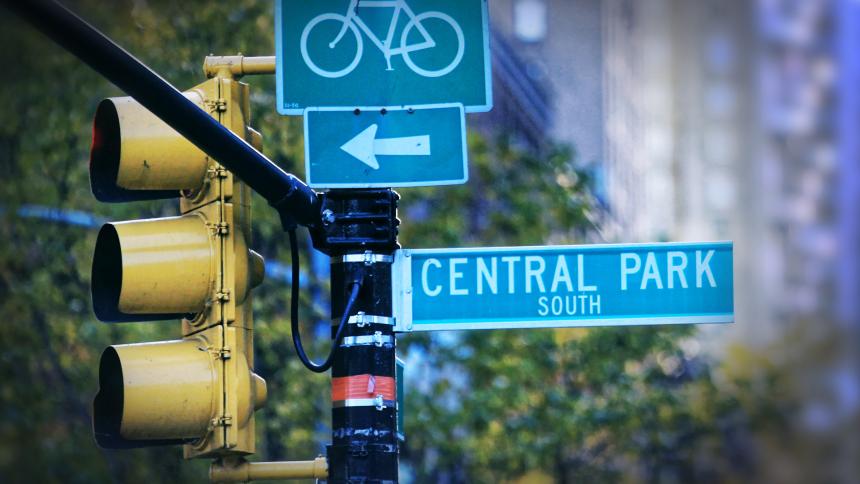
The Central Park Five: A landmark case of injustice and redemption
He was once one of the most demonised men in New York City, but now Yusef Salaam has won a Democratic primary and looks set for a seat on the City Council.
It’s been a remarkable story arc for this member of the so-called ‘Central Park Five’ – but just what was the case that led to Yusef and four others being wrongly jailed, and how were they finally exonerated?
What happened in the 1989 Central Park Jogger case?
In the late 1980s, New York City was a dangerous place with 1,896 homicides recorded in 1988 alone. Drugs were ravaging deprived areas and social tensions relating to wealth and racial inequities were creating a powder-keg environment. In the words of New Yorker journalist Jelani Cobb, ‘There’s turmoil, and there's greed, and there's poverty, and there’s fear and violence, and it’s all wrapped up in one big, tumultuous, single city between the East and Hudson Rivers.’
On 19th April 1989, an incident took place in Central Park which would act as a lightning rod for this febrile era. Widespread violence was breaking out in the park that night, with dozens of teenagers attacking and robbing passers-by, and police struggling to deal with an influx of 911 calls.
Unaware of just how bad the situation was, 28-year-old investment banker Trisha Meili went for her regular jog in the park. At some point, she was grabbed, raped, beaten, gagged and left for dead. A plastic surgeon who tended to her, Jane Haher, told the press, ‘I will never forget that day. I have seen traumatized patients many, many times. But I have never seen somebody, like, destroyed.’
Who were the Central Park Five?
The police rounded up a group of teenagers – four Black, one Latino – who were suspected of being involved in the spate of violence that night, and specifically the brutal attack on Trisha. Antron McCray, Kevin Richardson, Yusef Salaam, Korey Wise and Raymond Santana were all aged between 14 and 16 and subjected to intense interrogations.
Years later, Yusef recalled his frazzled state of mind during those hours: ‘If you take an individual that's 15 years old and you put that individual in a room by themselves with two to four to six officers – some of them wanting to attack you – that individual would be terrified. It could be almost tantamount to someone having a gun to your head.’
Four of the boys made confessions on videotape but later retracted what they said, with Yusef later writing that they were placed under duress by the detectives. Despite a lack of DNA evidence, contradictions in their ‘confessions’, and the fact that the victim had no memory of what happened, the legal machine that led to their convictions had been set in motion.
How was Donald Trump involved in the Central Park Five case?
The media immediately latched onto the case, portraying it in a racialised light as a kind of urban horror story featuring feral beasts preying on white victims. The attackers were dubbed a ‘wolf pack’, and the police claimed the kids had said they’d gone ‘wilding’ – that is to say, to raise hell.
The true meaning of the word, and whether it was ever used at all, has been debated ever since. In the view of California State University academic Stephen Mexal, who has written extensively on the word, ‘the cultural panic engendered by wilding measurably contributed to the verdicts.’
Another possible influence on the verdicts was property magnate Donald Trump. The future US president, who was a famed figure in New York City at that time, paid to have full-page advertisements placed in several newspapers, calling for the return of the death penalty. ‘I want to hate these muggers and murderers,’ Trump wrote. ‘They should be forced to suffer and, when they kill, they should be executed for their crimes.'
Though the Central Park case was not explicitly mentioned, the implication of the ad was obvious. In the words of New York civil rights lawyer Michael Warren, Trump ‘poisoned the minds of many people who lived in New York and who, rightfully, had a natural affinity for the victim.’
Yusef still remembers how it felt to have such a famous figure intervene so furiously in the case, recounting to The Guardian how ‘we were all afraid. Our families were afraid… For us to walk around as if we had a target on our backs, that’s how things were.’
What happened to the Central Park Five?
Following trials in 1990, the Central Park Five were convicted – largely based on the confessions – and handed lengthy prison terms. In court, Yusef described it as a ‘legal lynching’, while Korey Wise yelled at the prosecutor, ‘You made this up.’
The boys all served out their sentences, being released in the period between 1995 and 2002. The latter year proved to be a pivotal one in the case because this was when the real culprit, Matias Reyes, confessed the truth to officials.
Reyes, a convicted serial rapist and murderer, was already serving a life sentence for other brutal crimes. He’d apparently had a crisis of conscience prompting him to admit he’d committed the Central Park atrocity entirely on his own. DNA evidence confirmed his statement to be accurate, and the Central Park Five’s convictions were officially vacated that same year.
In what New York Mayor Bill de Blasio described as a long overdue ‘act of justice’, the exonerated five received a $41 million settlement over their wrongful convictions in 2014. Yusef Salaam has since made the transition to bona fide public figure with his electoral success, while Trisha Meili, who made a miraculous recovery after that night, has forged a career as a public speaker and author.
Meanwhile, Donald Trump has steadfastly refused to apologise for placing the incendiary newspaper ads which may have played such a crucial role in this notorious miscarriage of justice.







